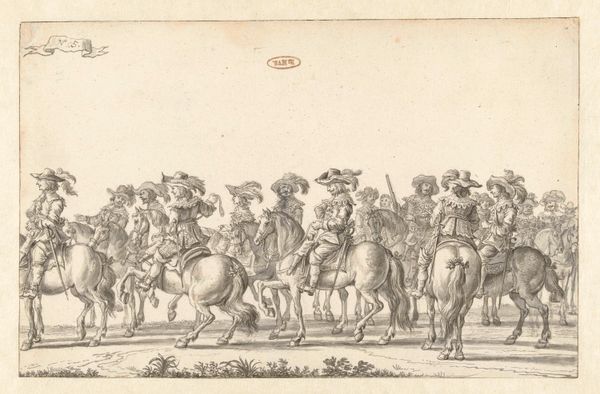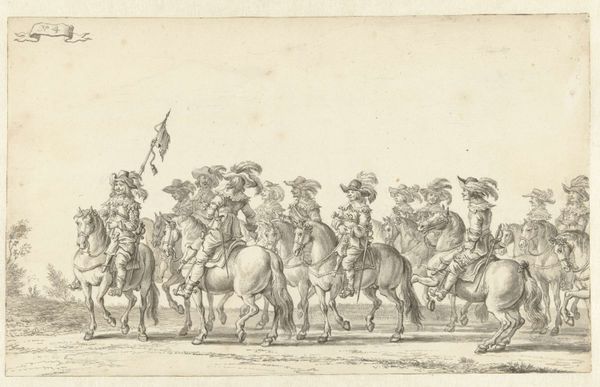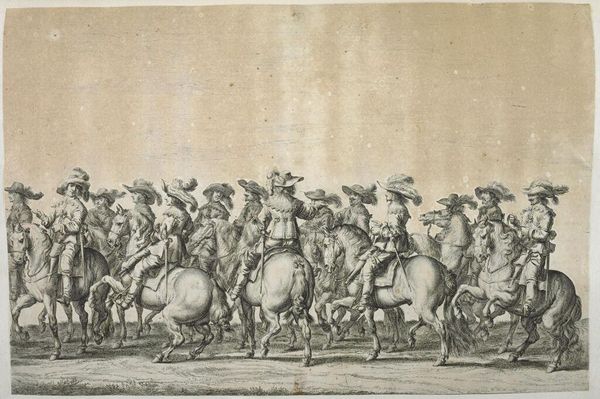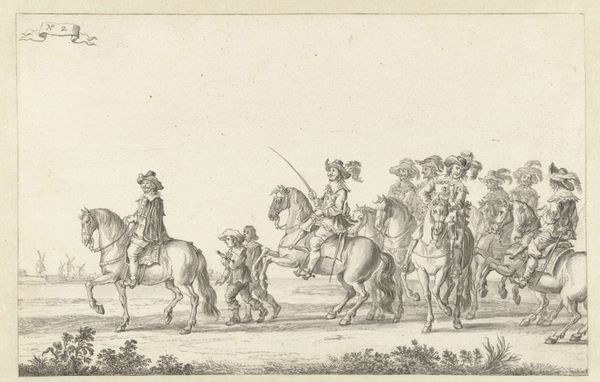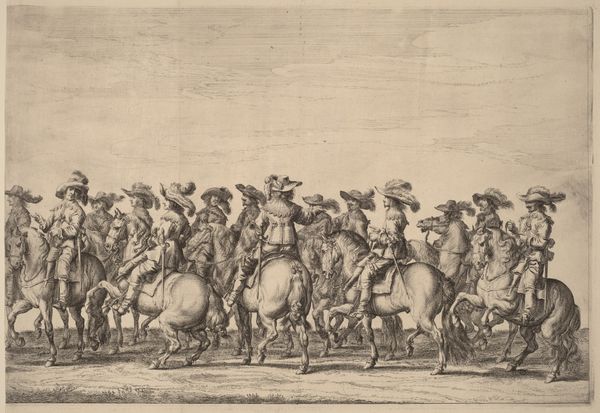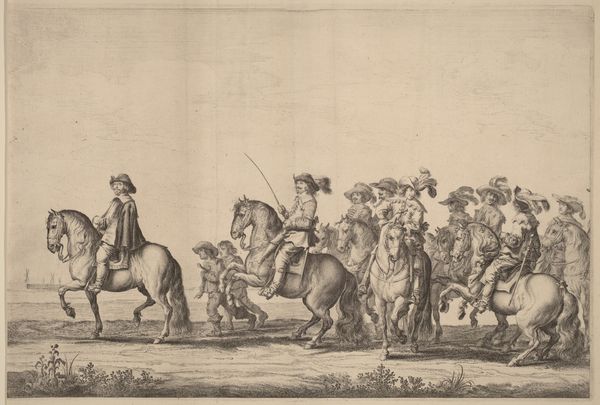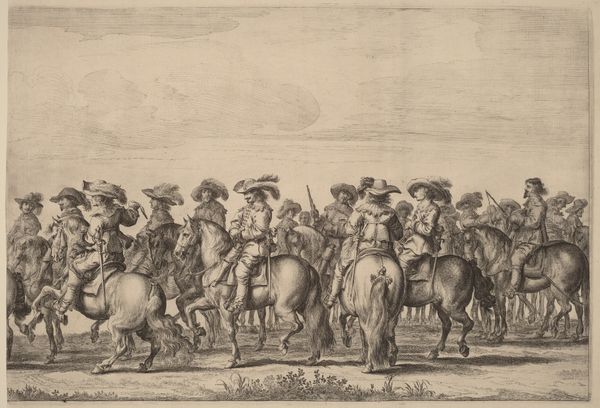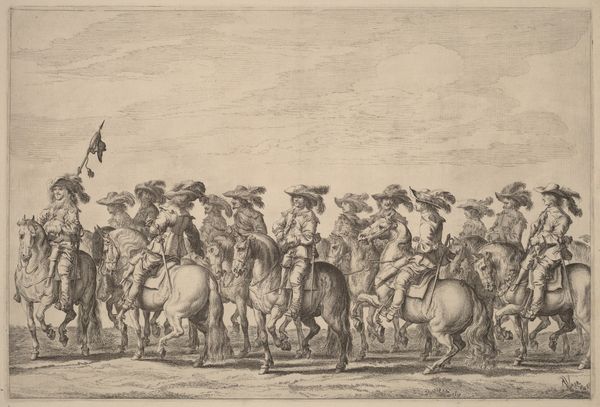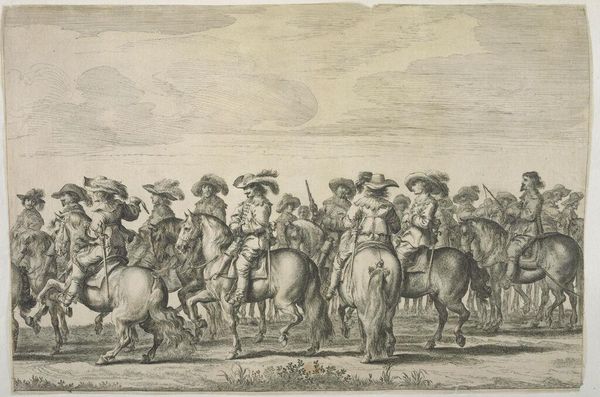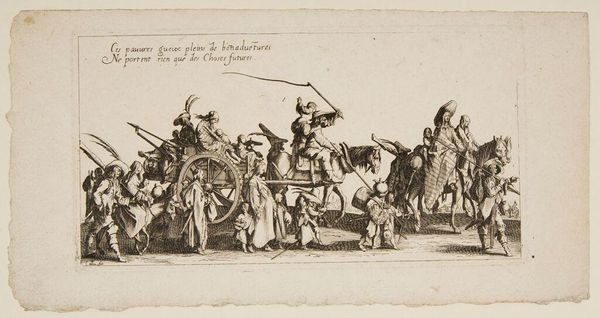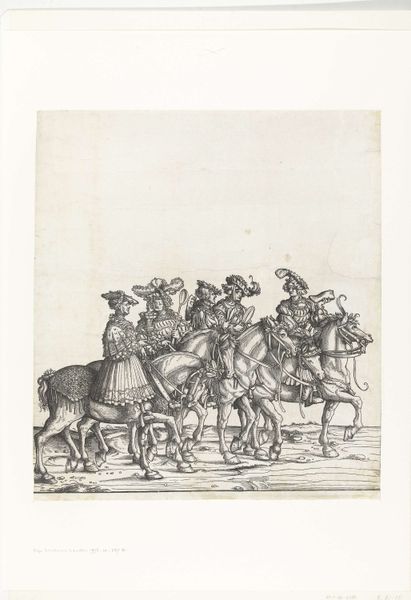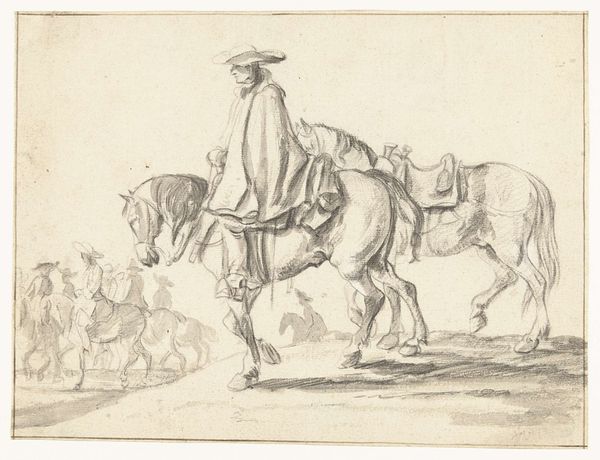
De intocht van Maria de' Medici te Amsterdam in 1638 (plaat 3) 1638 - 1639
0:00
0:00
drawing, print, etching, ink
#
drawing
#
baroque
# print
#
etching
#
landscape
#
figuration
#
ink
#
line
#
history-painting
Dimensions: height 198 mm, width 310 mm
Copyright: Rijks Museum: Open Domain
Editor: So, here we have Jan Martszen de Jonge’s “The Arrival of Maria de' Medici in Amsterdam in 1638,” created between 1638 and 1639. It’s an etching in ink. I'm immediately drawn to the detail in the clothing and the horses; the artist really captured a sense of pomp and circumstance. How do you approach a piece like this? Curator: From a materialist perspective, I see an etching—a reproducible image, inherently linked to distribution and dissemination. How does the print medium itself shape the event being depicted? The very act of creating multiples allows for a wider consumption of this image of power. We need to think about who was able to access these images and what narratives were being constructed through their circulation. Editor: That's a really interesting point, the power dynamic! But what about the subject matter itself? The arrival of a queen – that feels significant too. Curator: Precisely. Think about the labor involved: the engraver's skill, the paper production, the ink. Who benefits from this portrayal of wealth and power? The materials used – the ink, the paper – while seemingly simple, were products of complex networks of trade and labor. The production itself mirrors the economic landscape. Editor: So, the materials and the process of making the art are as important as what it depicts? Curator: Absolutely. The image celebrates royalty, but the etching’s production is rooted in the everyday realities of 17th-century Amsterdam. These realities include the economic engines of that era and its unequal power structures. Editor: I never thought about art from that angle before. I always focused on the subject or the artist's intention. Curator: Understanding the materiality opens up a completely new avenue of interpretation. The social context shapes both production and consumption, fundamentally influencing our understanding of the artwork's meaning and impact. Editor: This perspective makes me rethink how I analyze art in general. Thank you! Curator: Indeed, let us use these perspectives to help inform new generations of art-makers.
Comments
No comments
Be the first to comment and join the conversation on the ultimate creative platform.
